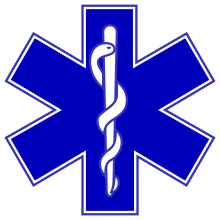The examples and perspective in this article deal primarily with United Kingdom? and do not represent a worldwide view of the subject. (October 2024) |

The Medical Priority Dispatch System (MPDS), sometimes referred to as the Advanced Medical Priority Dispatch System (AMPDS) is a unified system used to dispatch appropriate aid to medical emergencies including systematized caller interrogation and pre-arrival instructions. Priority Dispatch Corporation is licensed to design and publish MPDS and its various products, with research supported by the International Academy of Emergency Medical Dispatch (IAEMD). Priority Dispatch Corporation, in conjunction with the International Academies of Emergency Dispatch, have also produced similar systems for Police (Police Priority Dispatch System, PPDS) and Fire (Fire Priority Dispatch System, FPDS)
MPDS was developed by Jeff Clawson from 1976 to 1979 when he worked as an emergency medical technician and dispatcher prior to medical school. He designed a set of standardized protocols to triage patients via the telephone and thus improve the emergency response system. Protocols were first alphabetized by chief complaint that included key questions to ask the caller, pre-arrival instructions, and dispatch priorities. After many revisions, these simple cards have evolved into MPDS.
MPDS today still starts with the dispatcher asking the caller key questions. These questions allow the dispatchers to categorize the call by chief complaint and set a determinant level ranging from A (minor) to E (immediately life-threatening) relating to the severity of the patient's condition. The system also uses the determinant O which may be a referral to another service or other situation that may not actually require an ambulance response. Another sub-category code is used to further categorize the patient. The system is often used in the form of a software system called ProQA, which is also produced by Priority Dispatch Corp.